A message from Schulz Electric
Schulz Electric™ Refurbishes Critical Circulating Water Pump Motor in Only Four Days

A message from Schulz Electric
Schulz Electric™ Refurbishes Critical Circulating Water Pump Motor in Only Four Days
Yes, indeed, you do have one. It's rather surprising that many people simply don't realize that radiation exists naturally all around us, and is part of our everyday lives-whether we are aware or not.
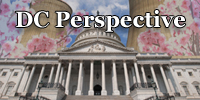
The U.S. Environmental Protection Agency just released a draft Protective Action Guideline (PAG) that sets standards and makes recommendations for the response to a large release of radioactive material into the environment (e.g., from a nuclear plant accident or a dirty bomb attack, etc.). The draft report is now out for public comments (which are due by July 15).
At about a quarter to three in the afternoon on March 11, 2011, a gigantic and unprecedented earthquake struck just over 110 miles off the coast of Fukushima Prefecture in Japan. The quake was followed, just over 40 minutes later, by the first of several rounds of tsunami, which inundated enormous areas and eradicated entire towns and villages. Over 19,000 people were killed or are still missing, and over 6,000 survivors were injured.
All ages are welcome at the Friday Nuclear Matinee for this short video from the UK. Kids get in free! Also, adults who enjoy British accents-and cartoons-and the funny word "aluminium."
Plus a few pointers to what's in store for 2013
With the 2012 American Nuclear Society Winter Meeting wrapping up in San Diego, a musical tribute to the nuclear sciences and technologies-and now, the nuclear arts!- is in order.
![tr-senate[1]](https://cdn.ans.org/cafe/2011/08/tr-senate16.jpg)
Rockwell
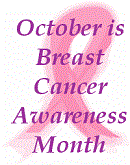 As a cancer researcher, I am constantly reminded of the horrific impact that breast cancer has on women and their families. This past week I received notification from my boss informing me and others that a work colleague's daughter had recently passed away from breast cancer at the age of 40-certainly this reminder was much closer to home than usual. It is difficult to imagine the pain and suffering my colleague and his wife are now experiencing, adding to what I am sure was a nerve-racking and exhausting period of consultations for the family and treatments for his daughter.
As a cancer researcher, I am constantly reminded of the horrific impact that breast cancer has on women and their families. This past week I received notification from my boss informing me and others that a work colleague's daughter had recently passed away from breast cancer at the age of 40-certainly this reminder was much closer to home than usual. It is difficult to imagine the pain and suffering my colleague and his wife are now experiencing, adding to what I am sure was a nerve-racking and exhausting period of consultations for the family and treatments for his daughter.
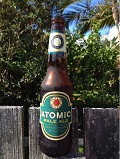 Science historian Alex Wellerstein recently wrote of a series of nuclear weapons tests conducted in 1955 at the Nevada Test Site, known as Operation Teapot. Among the important civil defense questions explored at the time was: What will the survivors drink after a nuclear apocalypse?
Science historian Alex Wellerstein recently wrote of a series of nuclear weapons tests conducted in 1955 at the Nevada Test Site, known as Operation Teapot. Among the important civil defense questions explored at the time was: What will the survivors drink after a nuclear apocalypse?
At the ANS 2012 Annual Meeting, ANS Public Information Committee's Dan Yurman caught up with Dr. Wade Allison, of Oxford University, UK. They discussed radiation, health effects, Fukushima, Dr. Allison's recent book Radiation and Reason, and Dr. Allison's recent trip to Japan in this video interview.
NASA's Radiation Belt Storm Probes mission is scheduled for launch early on Thursday morning, August 30. How and why? An ANS Nuclear Cafe double feature matinee:
Even before its successful landing earlier this week, NASA's Mars Science Laboratory was already sending back important scientific data-about the radiation exposure that astronauts might face during a mission to the Red Planet.
The Arthur M. Sackler Colloquia addresses scientific topics of broad and current interest that cut across the boundaries of traditional disciplines. "The Science of Science Communication" was a Sackler Colloquium interdisciplinary scientific meeting held at the National Academy of Sciences in Washington, D.C., on May 21-22, 2012. At this meeting, American Nuclear Society Past President Dr. Eric Loewen addressed the other "three R's" of [nuclear] education: Radiation, Reactors, and Residuals.
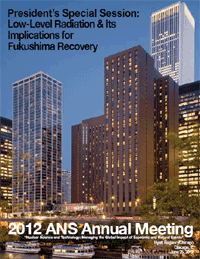 At the ANS Annual Meeting in Chicago held June 24-28, I attended the "President's Special Session on Low Level Radiation and Its Implications for Fukushima Recovery," and also the follow-on panel "Health Effects of Low-Level Radiation." The two sessions together could well have been subtitled "The Tragedy of LNT." In case you've forgotten, LNT stands for "Linear No Threshold"-the popular misconception that radiation risk is proportional to dose all the way down to zero.
At the ANS Annual Meeting in Chicago held June 24-28, I attended the "President's Special Session on Low Level Radiation and Its Implications for Fukushima Recovery," and also the follow-on panel "Health Effects of Low-Level Radiation." The two sessions together could well have been subtitled "The Tragedy of LNT." In case you've forgotten, LNT stands for "Linear No Threshold"-the popular misconception that radiation risk is proportional to dose all the way down to zero.
 The American Nuclear Society's annual meeting for 2012 included a President's Special Session titled Low-Level Radiation & Its Implications for Fukushima Recovery (Warning-the link leads to a 54 MB, 208 page PDF full of disruptive information that might change your opinion on the benefits of spending billions of dollars every year to keep radiation doses as low as unreasonably achievable).
The American Nuclear Society's annual meeting for 2012 included a President's Special Session titled Low-Level Radiation & Its Implications for Fukushima Recovery (Warning-the link leads to a 54 MB, 208 page PDF full of disruptive information that might change your opinion on the benefits of spending billions of dollars every year to keep radiation doses as low as unreasonably achievable).
Facts vs. myths about the health effects of Fukushima and Chernobyl. The conclusions of scientists studying health consequences may be startling to those exposed only to commonly held beliefs and traditional media (and Chernobyl Diaries!)
In recent days, a number of articles have been printed that assert that a grave danger exists at the Fukushima Daiichi nuclear generating station. These articles claim that this danger exists due to the condition of the spent nuclear fuel at the site and the supposedly shaky condition of its storage and care. Two examples:
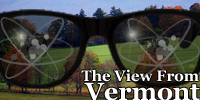 Since March 22 of this year, the Vermont Yankee nuclear power plant has been operating via a 20-year license extension granted by the Nuclear Regulatory Commission. The State of Vermont has been barred from attempting to shut down the plant by federal court injunctions. Nonetheless, the follies surrounding the plant continue, with all stakeholders participating: the legal system, the legislature, plant supporters, and plant opponents.
Since March 22 of this year, the Vermont Yankee nuclear power plant has been operating via a 20-year license extension granted by the Nuclear Regulatory Commission. The State of Vermont has been barred from attempting to shut down the plant by federal court injunctions. Nonetheless, the follies surrounding the plant continue, with all stakeholders participating: the legal system, the legislature, plant supporters, and plant opponents.
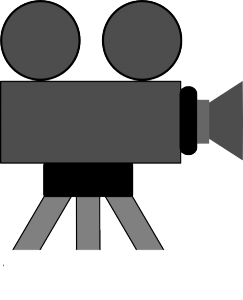 The 4th annual Texas Atomic Film Festival (TAFF) is being held April 26 to May 3, 2012. The festival attracts short films (3 to 5 minutes) produced by students in nuclear engineering courses at the University of Texas at Austin. A public screening of the films, which focus on nuclear and energy related topics, is being held on April 26 at 12:30 pm at the UT Student Activities Center auditorium.
The 4th annual Texas Atomic Film Festival (TAFF) is being held April 26 to May 3, 2012. The festival attracts short films (3 to 5 minutes) produced by students in nuclear engineering courses at the University of Texas at Austin. A public screening of the films, which focus on nuclear and energy related topics, is being held on April 26 at 12:30 pm at the UT Student Activities Center auditorium.